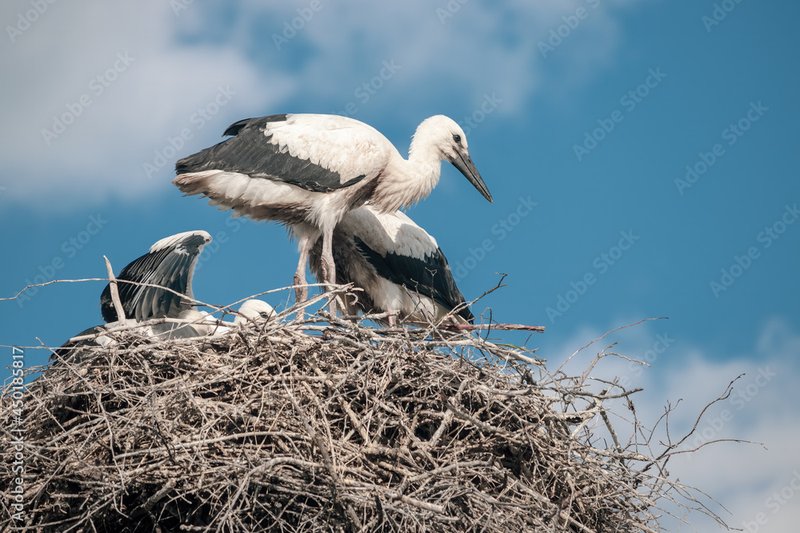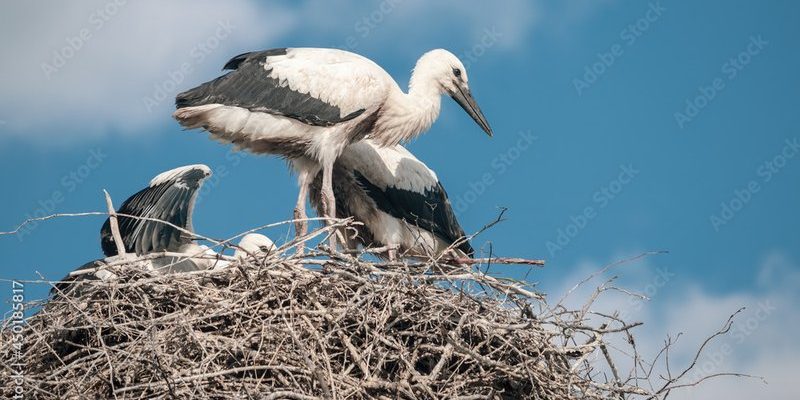
These birds are not just good at finding food; they’re also experts at creating their homes and raising their young. So, let’s dig deeper into how storks adapt to their environment, and along the way, you’ll see how amazing these creatures truly are.
Physical Adaptations for Various Habitats
Storks are built for a variety of habitats, and their physical features play a huge role. Their long legs allow them to wade through shallow waters, making it easy to hunt for fish, frogs, and other small creatures. Imagine trying to reach for something just out of your grasp—storks can do this with ease, thanks to their height. Their long necks enable them to see predators or prey from a distance, giving them a survival edge.
In addition to their legs and necks, storks have sturdy wings that allow them to soar long distances. This capability not only aids in migration but also helps them find new feeding areas. When the seasons change, storks are ready to move, gliding on warm air currents to migrate thousands of miles. It’s like having a built-in GPS for finding the best spots to eat and nest.
Behavioral Adaptations in Feeding
Storks are opportunistic feeders, which means they’re quick to adapt their feeding tactics based on the environment. In wetlands, they might hunt for fish, while in fields, they could be seen snatching up insects or small rodents. Think of them as flexible diners at a buffet—they’ll choose what’s available to fill their plates.
When it comes to feeding strategies, storks have unique methods. They often use their sharp beaks to probe into the mud or grass, searching for hidden treats. During times of drought or habitat change, they can switch their diet to whatever small creatures or plants are available. This flexibility not only showcases their adaptability but also emphasizes the importance of understanding local ecosystems and the variety of food sources around them.
Nesting Strategies for Different Environments
Storks are known for their impressive nests, which they build using sticks, grass, and other materials. These nests can be found on treetops, buildings, or even on the ground, depending on what’s available. Their nesting behavior is a prime example of how they adapt to different environments.
When selecting a nesting site, storks consider safety, food accessibility, and shelter from the elements. For instance, in urban areas, they often opt for tall buildings, using them as platforms to build their nests. It’s fascinating to think about how a stork might choose a city skyscraper instead of a traditional tree to keep their young safe from predators. This adaptability showcases their intelligence and ability to thrive in human-altered landscapes.
Migration Patterns and Environmental Changes
Migration is a key part of a stork’s life. Many species of storks migrate seasonally, following food availability and suitable breeding conditions. They travel thousands of miles between breeding and wintering grounds, much like snowbirds heading south for the winter.
Changes in climate and land use can significantly impact their migration patterns. For example, if a particular wetland dries up or changes due to farming activities, storks may adjust their routes, searching for new places to feed and nest. This adaptability is crucial for their survival, as it allows them to cope with changing environments and ensures they can continue to thrive.
Social Behavior and Learning from Each Other
Storks are social creatures, often found in groups, especially during feeding and nesting times. This social behavior plays a big role in their adaptability. Young storks learn feeding techniques and nesting strategies by observing older birds. Imagine a young stork watching its parent expertly fish in a lake, picking up tips that will help it survive later.
This social learning is essential, especially as environments change. If a new predator appears or a food source diminishes, storks can quickly adapt by learning from their peers. Their ability to communicate and collaborate with each other helps protect the entire group, making them resilient against environmental challenges.
Impact of Human Activity on Stork Adaptations
Human activity has a mixed impact on storks and their adaptability. On one hand, urban development can offer new nesting sites for storks. On the other hand, it can lead to habitat loss and reduced food availability. Storks need clean, safe environments to thrive, just like we do.
One example of positive adaptation is the way some storks have begun nesting on man-made structures. They often find a welcoming home on rooftops of buildings or even on power poles. This behavior showcases their ability to adapt to changes in their surroundings, but it also highlights the need for us to create environments that support wildlife.
Conservation Efforts and Future Adaptations
As their environments continue to change, conservation efforts are vital to supporting stork populations. Protecting wetlands, restoring habitats, and reducing pollution can help ensure that storks have the resources they need to adapt and thrive.
By understanding how storks adapt to their environment, we can create better conditions for these remarkable birds. Working together to preserve their habitats can foster healthy populations that continue to grace our skies for generations to come. It’s a reminder of our role in the ecosystem and how we can make a difference.
In conclusion, storks are more than just elegant birds—they’re remarkable adaptors, thriving in various environments through their physical, behavioral, and social adaptations. By learning about how they adjust to and navigate challenges, we can appreciate these incredible creatures even more. So, the next time you spot a stork soaring overhead, think about the journey it’s taken to get there and the clever ways it has learned to thrive in our changing world.

